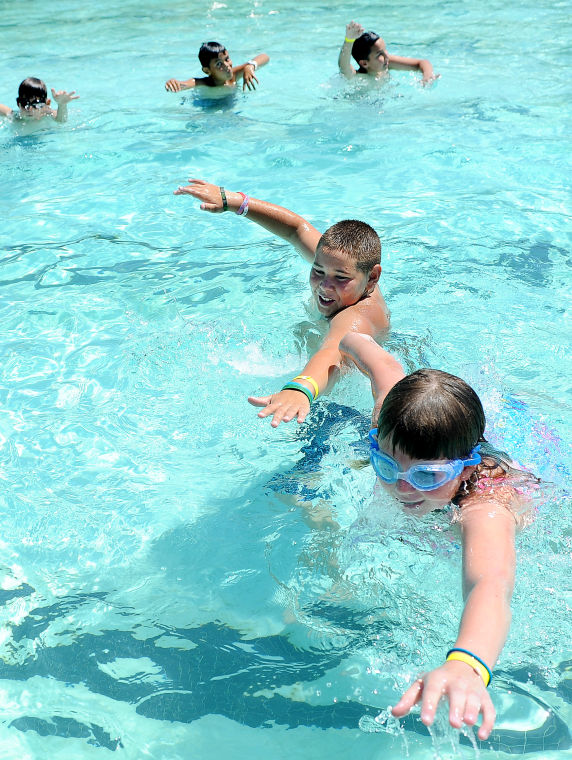
An audience of more than 50 people this week saw some sobering numbers for what a replacement pool could cost for San Benito High School.
The smallest and cheapest option presented by district architects at a Monday district board meeting had an $8.4 million price tag, and a plan for a community aquatic center would cost an estimated $13.2 million. Staff and trustees called the figures too high to handle alone and suggested a joint-use agreement that would allow the school to share the facility—and its costs—with the city, county and other interested parties.
“It’s interesting,” said Trustee Bill Tiffany, after seeing possible plans. “It’s exciting. It’s fun to dream about, I’d say. But it’s expensive.”
Trustees praised the number of swimmers who attended the meeting this week— and a prior one in June—for coming up with possible solutions to the campus’ facility issues.
The school’s pools were drained this summer after the district received a “cease and desist notice” from the city and county water board for discharging chlorinated water into the storm drain, a practice that was no longer legal. Swimmers and their parents helped get the larger pool reopened to sports teams but the smaller one is still drained and empty.
At the meeting this week, trustees saw flashy presentations by the district architect and Myrtha Pools, a company that builds custom-made aquatic facilities for international swimming competitions using large amounts of stainless steel instead of concrete.
Community member John Corrigan acknowledged the facilities had high price tags but argued not having one had its own costs.
“Yes, pools are expensive, but the cost of not having a pool are lost scholarships, lost lives,” he said.
But finances proved a sticking point for staff officials and trustees, who reminded aquatic fans attending their June meeting that the public had pushed against using Measure G funds—the $42.5 million general obligation facilities bond narrowly approved by voters in June 2014—to work on the district’s outdated athletics facilities.
Trustee Bill Tiffany asked how long the “temporary” fix for the large pool would last and inquired about the fate of the smaller one used to teach swimming during physical education classes.
“Our so-called ‘shallow pool’—is that just completely shot?,” the trustee said. “Is that something that could be repaired?”
Sara Fontanos, a management analyst for San Benito County, asked about safety issues with the pools. She also invited the group to take part in the intergovernmental committee meeting at 10 a.m. Thursday at Hollister City Hall, where they could propose a joint-use agreement for a community aquatic center.
Superintendent John Perales “was impressed” by the architects’ $13.2 million plan that featured a recreation pool, water features, bleachers and a diving area, he said. The district, however, could not afford such a project alone, he explained.
“We’re willing to work with the community to get something fantastic like the last [PowerPoint] slide shown,” Perales said. “But it can’t be all on our dime.”









